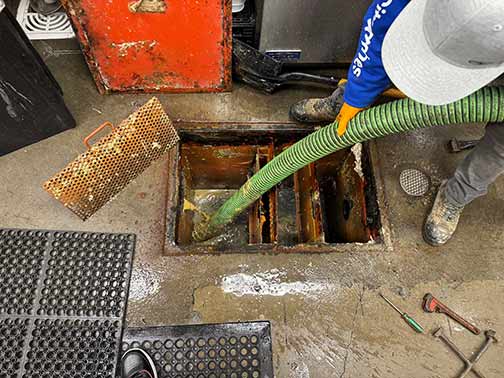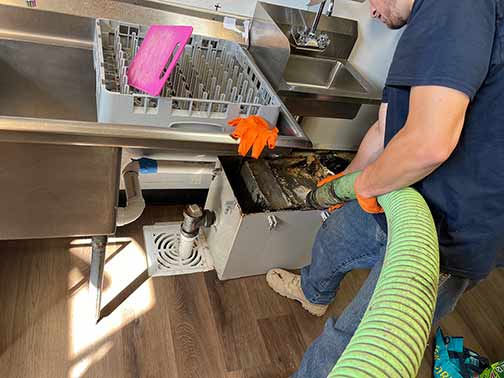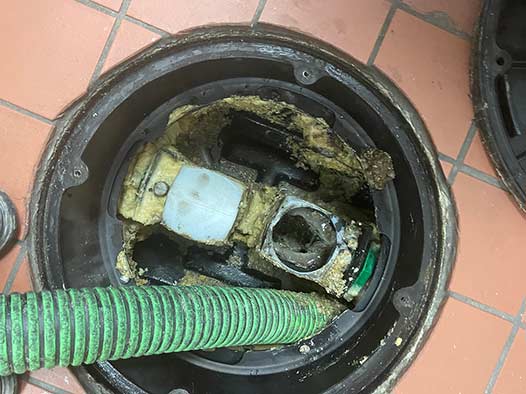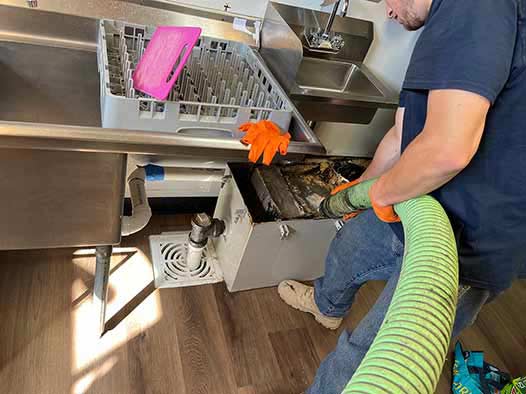
The cornerstone of an efficient commercial kitchen is proper maintenance of its grease trap. As a filtration device, a grease trap is designed to intercept most greases and solids before they enter wastewater disposal systems. Regular maintenance and cleaning of grease traps not only ensure proper function but also prevent blockages, backups, and pollution. In essence, grease trap maintenance is vital for the operational health of the establishment’s plumbing system and overall environmental hygiene.
Comprehending the Regulatory Requirements for Grease Trap Cleaning
Understanding and adhering to the regulatory requirements for grease trap cleaning is imperative for any food service establishment. Regulations vary by region, but commonly, local municipalities have established comprehensive guidelines that detail various aspects of grease trap maintenance, including the frequency of cleaning, documentation, and disposal methods. Staying compliant with these regulations helps prevent legal repercussions, hefty fines, and potential closure of the establishment. Ensuring that your establishment complies with these mandates is essential for seamless business operations.
Determining the Recommended Frequency for Cleaning Your Grease Trap
Determining how often a grease trap should be cleaned is not a one-size-fits-all solution. However, a general recommendation is to clean the grease trap at least once every three months. This frequency may vary depending on the size of the trap, volume of grease produced, and local regulations. Regularly scheduled checks and cleaning can help in maintaining optimal efficiency and longevity of the grease trap. In situations where the trap fills up more rapidly, more frequent cleanings may be necessary to prevent overflow and ensure compliance with health and safety standards.
Identifying Factors Influencing Your Grease Trap Cleaning Schedule
Several factors influence how frequently a grease trap needs to be cleaned. These may include:
- The volume of food product: High-volume kitchens produce more grease, necessitating more frequent cleanings.
- Type of food served: Different cuisines produce varying levels of grease and oil, affecting the cleaning schedule.
- Size and capacity of the grease trap: Larger traps may need to be cleaned less frequently, while smaller traps fill up faster.
- Local health and regulatory guidelines: Adhering to municipal regulations can influence the cleaning schedule.
Recognizing Signs That Your Trap Needs Immediate Cleaning
Recognizing the signs that indicate an immediate need for grease trap cleaning is crucial. Some of the key indicators include:
- Foul odors: Unpleasant smells emanating from kitchen drains suggest that the trap is full and requires cleaning.
- Slow drainage: Slow-moving drains indicate a blockage in the trap, signaling an urgent need for cleaning.
- Visible grease: If grease is noticeable around drains or the grease trap, it is an immediate sign that cleaning is overdue.
- Backups or overflows: Wastewater backing up or grease overflowing means the trap is not functioning properly and needs cleaning.

Neglecting grease trap maintenance can lead to severe consequences, including health hazards, environmental harm, and operational disruptions.
Assessing the Consequences of Neglecting Regular Grease Trap Cleaning
Neglecting maintenance can lead to severe consequences, including health hazards, environmental harm, and operational disruptions. Blocked grease traps can cause backups, leading to slippery floors, increased risk of accidents, and unsanitary conditions. Continuous neglect can damage the plumbing system, resulting in expensive repairs and increased downtime. Furthermore, non-compliance with regulatory guidelines can lead to hefty fines, licensing issues, and potential closure of the establishment. Therefore, consistent maintenance is the key to avoiding these adverse consequences.
Implementing Best Practices for Efficient Grease Trap Cleaning and Maintenance
Implementing best practices for grease trap maintenance ensures sustained efficiency and regulatory compliance. Consider the following steps:
- Regular inspections: Conduct routine checks to monitor grease levels and trap condition.
- Scheduled cleanings: Establish a consistent cleaning schedule based on the trap’s capacity and usage.
- Proper disposal: Adhere to environmental guidelines for the safe disposal of grease and solid waste.
- Record keeping: Maintain detailed logs of cleaning schedules, inspections, and servicing for regulatory compliance.
Exploring Professional Grease Trap Cleaning Services
Partnering with professional grease trap cleaning services can be advantageous for maintaining compliance and efficiency. These services employ trained personnel equipped with specialized tools and techniques to ensure thorough cleaning and maintenance of grease traps. Professional cleaners can also provide valuable insights into optimizing grease trap performance and staying compliant with local regulations. Additionally, outsourcing grease trap maintenance allows business owners to focus on core operations without worrying about regulatory adherence and potential pitfalls.
Realizing the Benefits of Staying Compliant with Grease Trap Regulations
Staying compliant with grease trap regulations offers numerous benefits for food service establishments. Primarily, it ensures a hygienic and safe working environment by preventing blockages and backups. Regulatory compliance also minimizes the risk of legal issues, fines, and potential closure, safeguarding the business’s reputation and continuity. Moreover, efficient grease trap maintenance contributes to environmental conservation by reducing the amount of grease and pollutants entering the wastewater system. Ultimately, adhering to regulatory guidelines and best practices ensures smooth, trouble-free operations and long term success.



